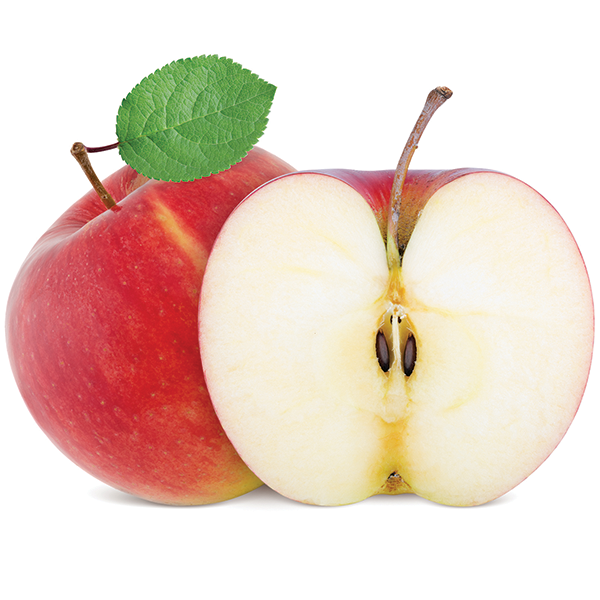
Organic apples are becoming more popular. Take advantage of those new-found fans by maintaining a well-stocked apple display that includes a good sampling of organic apple varieties.
Apples are popular year-round but sales peak in the fall when the new crop comes in. This is true for both conventional and organic product. Take advantage of consumer interest in the fall by marketing apples with other organic items, including baking supplies and dips.
Organic apples lend themselves to green marketing promotions. While organic produce of any kind can not be marketed as healthier than conventional produce, the growing practices used in organic production can be promoted as better for the environment to your environmentally conscious consumers. You can also market organic apples as being grown using sustainable practices that result in fewer chemicals making it to the store on the apples.
If you source organic apples from a local orchard, be sure to make that a prominent selling point in your display to attract consumers who want locally grown produce.
Include organic apples in winter holiday promotions and especially in New Years’ promotions aimed at health-conscious consumers. Consider offering samples of organic apples to give consumers unfamiliar with organic options a taste. Sampling offered by a knowledgeable staff member also gives you an opportunity to explain the difference between organic and conventional product to those who may be unfamiliar with the distinction.
Price is one of the biggest obstacles to increasing organic apple sales, especially of already more expensive proprietary varieties. Consider posting signs near your organic apples that explain the added labor that goes into organic production, which can raise the prices.
You can use some of the same strategies to market organic apples as you use in your conventional displays, along with some strategies unique to organics. Offer consumers plenty of choices. While the market for organic apples may be smaller than that for conventional product, creating a display that includes several varieties will appeal to all types of consumers and will help move apples off the shelves.
Decide if you want to place organic product next to your conventional product or set it aside in a section by itself. Some organic apple varieties are close in price to the same conventional variety and my do well when displayed side by side. Other apple varieties have a higher price markup and may suffer from being displayed next to their conventional counterparts. You may want to try a few different options to see what sells best in your department. Remember, when displaying conventional product next to organic product, barriers need to be in place to prevent the conventional and organic product from touching.
If you have a large apple display, considering displaying conventional apples on one side of the aisle and organic apples on the other side. This creates an attractive display and avoids accidental mixing of product.
Shipping
A variety of packaging options are available from most shippers, including custom packaging. Some of the most popular options include:
12 3-pound bags
40-pound cartons
38-pound cartons
40-pound traypacks
27-pound euroboxes
Many shippers will custom pack in poly bags, mesh bags, clamshells, traypacks, tri-wall bulk bins and RPCs. Sizes vary according to customer specifications.
Sliced apple packs are a consumer favorite and are available from shippers in a variety of weights and units, with 2-ounce single packs and 12-ounce bags being common options.
Sizes
small – 100s-216s
large – 88s-72s
extra-large – 64s-36s
Grades
United States
U.S. Extra Fancy
U.S. Fancy
U.S. No. 1
Combination grades (Combinations of: U.S. extra fancy and U.S. fancy; U.S. fancy and U.S. No. 1; and U.S. No 1 and U.S. utility are permitted when at least 50% of the apples in any lot meet the requirements of the higher grade.)
Washington state grades
Washington Extra Fancy
Washington Fancy
Washington grades are a higher standard than the corresponding U.S. grade.
Washington has implemented minimum internal condition standards for all grades of delicious apples.
Handling
Temperature: 32 to 34 F, 0 to1.1 C
Relative humidity: 90-95%
Mist: No
Typical shelf life: 90 to 240 days (under refrigeration)
Ethylene producer (Do not store with ethylene-sensitive items.)
Odor-sensitive (Will absorb odors produced by potatoes, bulb onions or any strong-flavored item.)
Moderately sensitive to freezing injury.
It is especially important that controlled-atmosphere apples are refrigerated at the proper temperature because they are more susceptible to becoming mealy.
When stacking containers in the back room, make sure to stack organic items at the top so residue from conventional produce doesn’t drip down onto the organic items.
Organic items can be stored side by side in the cooler as long as no product is touching and no residue can drip from the conventional onto the organic product.